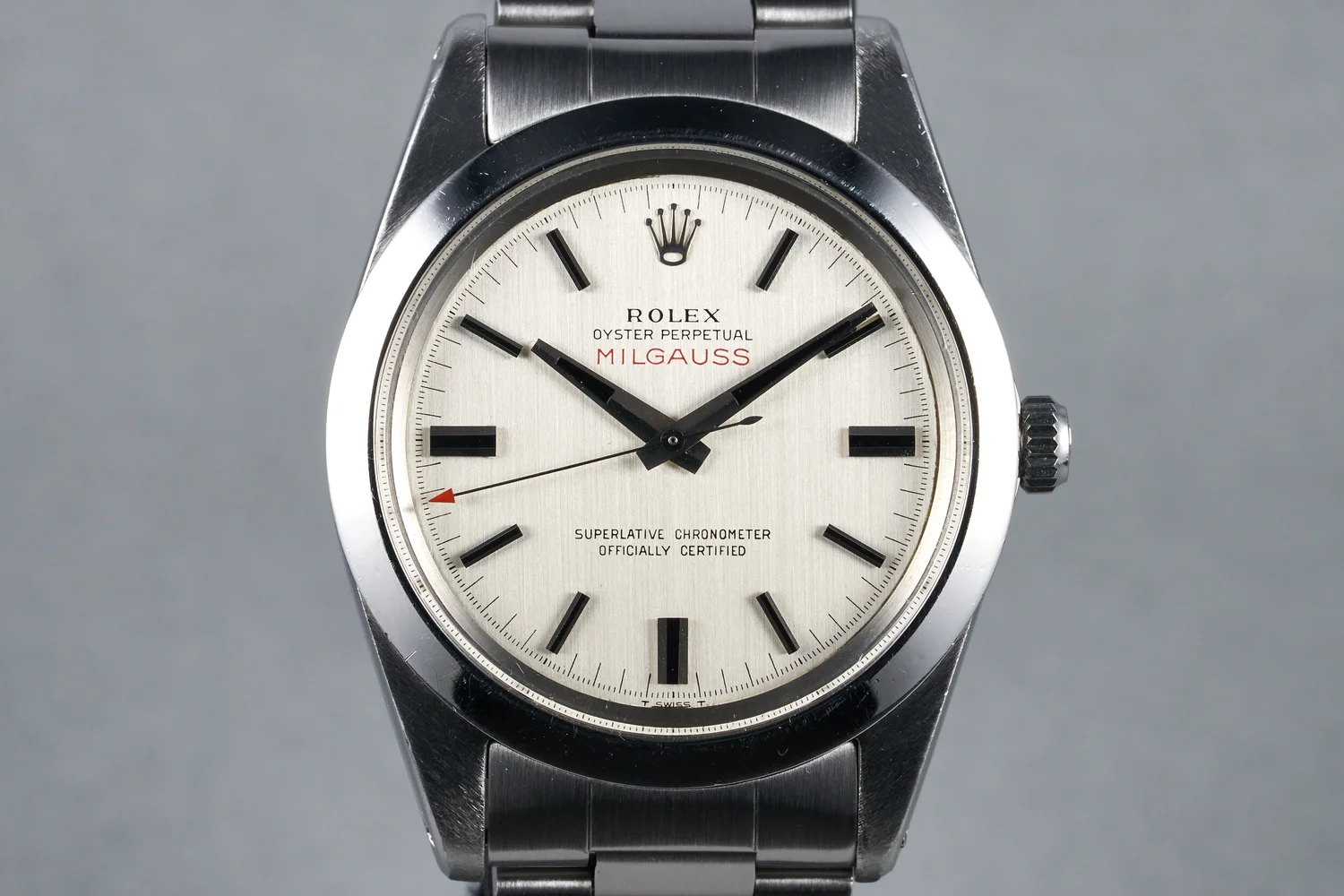The Rolex Milgauss was first introduced in the mid-1950s, designed specifically for professionals exposed to strong magnetic fields such as scientists and engineers. Developed in collaboration with CERN, the European Organization for Nuclear Research, the Milgauss was engineered to withstand extreme levels of magnetism that could disrupt the accuracy of a mechanical watch. By using anti-magnetic alloys and enclosing the movement within an iron case, Rolex ensured the Milgauss could resist interference in environments like laboratories and power plants, where electromagnetic fields were a daily concern.
In 1960, Rolex released the Milgauss reference 1019, a model that would remain in production until 1989, making it one of the brand’s longest-running references despite its relatively niche appeal. The 1019 carried forward the technical innovations of its predecessors, including an inner amagnetic shield that completed the Faraday cage construction around the movement, offering exceptional protection against magnetic forces.
The stainless steel case of the 1019 measured 38mm, housing the calibre 1580 movement inside its anti-magnetic case. Its dial was notably thicker than standard Rolex dials, further contributing to magnetic resistance. The reference was available with either a black dial or a vertically brushed silver dial, both featuring the word “MILGAUSS” in red text for distinction.
The hands of the 1019 featured polished baton-shaped hands, and a seconds hand with a red tip, providing a subtle but distinctive contrast. Together, these design details made the 1019 a technically advanced yet understated watch, one that reflected Rolex’s commitment to precision in even the most challenging environments.


